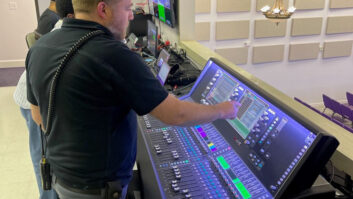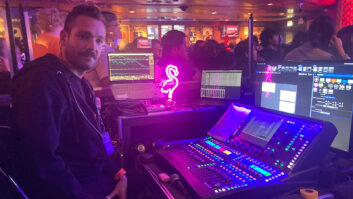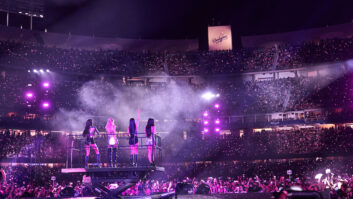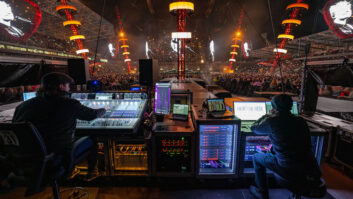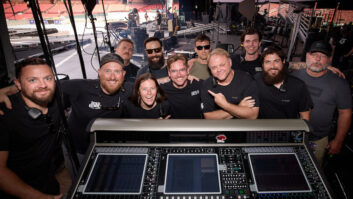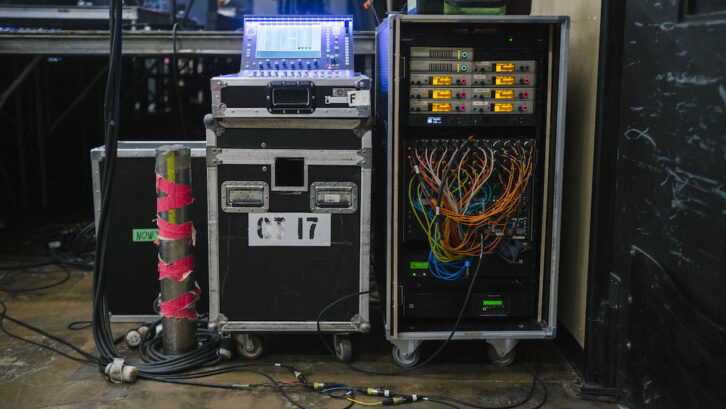
New York, NY (April 7, 2023)—Across nine albums and a quarter-century, UnderOath has always played its heavy post-hardcore with a punishing, visceral energy that translates into a powerful live show. Touring behind its latest collection, 2022’s Voyeurist, the band has been crossing the U.S. with supporting acts Periphery and Loathe, and helping to bring that bludgeoning to the masses nightly is engineer J.J. Revell, who also acts as the group’s production manager.
Revell has been mixing the band on a compact Allen & Heath dLive C1500 control surface tied to a small format DM0 MixRack to handle the 128 channels of processing and a GX4816 stagebox. The DM0 connects via Allen & Heath’s proprietary multichannel gigaACE protocol to a separate DM48 MixRack near the stage, which allows for a simple digital split with a second C1500 surface handling monitor mixes.
Despite the second monitor console, the band does not tour with a dedicated monitor engineer for its IEM mixes. “It’s basically set it and forget it,” explained Revell. “The band members are not picky and we usually get it dialed in before the show so we don’t need to make further adjustments.”
British Music Embassy Returns to SXSW
Keeping things lightweight, Revell makes full use of the internal channel processing available, eschewing use of an outside plug-in server. “Our drummer is one of the vocalists, which creates a lot of issues since you have to pick out the vocals you want without picking up all the surrounding drum sounds,” he explained. “The Source Expander is phenomenal for helping with that and not making the opening and closing of the drum gates audible.”
For effects, Revell uses the full palette to emulate the band’s studio recordings. “When I was building the show file, I set up 16 FX buses,” he recalled. “I use chorus, reverb, and saturator for guitars. I also have reverb, chorus and two different delays for vocal channels. Sometimes I’ll add some saturation for the bass as well. Having all of these effects built-in allows me to be creative, and I can use the mixer as an instrument—because I’m performing, too.”
